

for the Thai language
 |  | Internet resource for the Thai language |
F.A.Q. Check out the list of frequently asked questions for a quick answer to your inquiry
recent donations!
Sign-up to join our mailing list. You'll receive email notification when this site is updated. Your privacy is guaranteed; this list is not sold, shared, or used for any other purpose. Click here for more information.
To unsubscribe, click here.
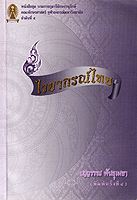
ไวยากรณ์ไทย [Thai Grammar] by นววรรณ พันธุเมธา [Nawawan Phanthumetha], ISBN 974-9993-27-6, published 2554 (2011), 190 baht.
This book of Thai grammar first published by Chula University publishing in 1982 emphasizes the grammar of the spoken language. The author gets right to the heart of what we Westerners would call “grammar” by discussing topics such as parts of speech and sentence construction. She does not discuss historical etymology, spelling, pronunciation, the royal language, or the structure of Thai poetry, as many other Thai grammar books do. Her emphasis, rather, is on clear communications. Ajarn Nawawan provides numerous sample sentences, most of which are fairly accessible to intermediate foreign student of Thai. In addition to “correct” sentences, she often provides “incorrect” sentences labeled with an asterisk for contrast.
Her chapter titled “การละคำในประโยค” [Omitting Words from Sentences] is worth the price of the entire volume. The penultimate chapter of the book beginning on page 346 discusses the grammar of conversations: ประโยคสนทนา. This chapter covers such topics as word repetition; word omission; word substitution; word relationships; and, words connecting elements of a conversation.
The benefit of this text for foreign learners is that it provides a structured approach to Thai grammar in the language which native Thai speakers can understand. This approach will allow the foreign language learner to better communicate with native speakers when the learner has questions about specific words or sentence construction. In addition, the book’s extensive use of sample sentences provides the student with much material for communications. Finally, the vocabulary used and the construction of the sentences in the text is fairly accessible for the intermediate-level foreign learner of Thai.
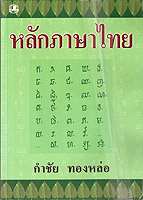
หลักภาษาไทย [Fundamentals of the Thai Language] by กำชัย ทองหล่อ [Kumchai Thonglaw], ISBN 974-246-635-1, first published 30 June 2495 (1952), most recent printing barcode 978-974-246-635-0, 345 baht.
If you are looking for a single Thai book that will answer almost all your questions about the classical Thai language, its history and development, and its grammatical elements, the Fundamentals of the Thai language is it. This 540 page, large format, small print tome has been the go-to source for answering language questions for over fifty years. The topics covered include the history and development of Thai orthography; the use of vowels, consonants, tone marks, and other written elements; combining forms; how words are written; parts of speech in Thai; Sanskrit and Pali words , prefixes and suffixes brought into Thai; Thai sentence structure and syntax; forms of Thai poetry; reading and pronouncing Thai words; and reciting Thai poetry.
In addition to the major section on Sanskrit and Pali, Kumchai provides us Thai word derivations from Khmer, Chinese, and English. The section of “Parts of Speech” (ชนิดของคำ) extends from pages 196 to 265 and while later scholarship has added much thoughtful analysis to this subject, Kumchai is the canonical statement on the subject. Following this section is a discussion on Thai "syntax" (วากยสัมพันธ์) which encompasses phrases, clauses, and various types of sentence structures.
Foreign students of Thai often have difficulty deriving the correct pronunciation of Thai words from their written form. Kumchai deals with the rules and exceptions of the Thai writing system from pages 494-521. His discussion on pronunciation covers both prose and poetry.
Unfortunately for such an important reference work, the book lacks an index, a fault not fully compensated for by the extensive Table of Contents.
Despite the fact that the Fundamentals of the Thai Language does not cover the extensive changes that have occurred to the modern form of the language, this book should be a part of the library of every serious student of Thai.
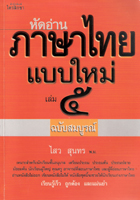
หัดอ่านภาษาไทยแบบใหม่ [Learning to Read Thai the New Way] Volumes 1-7 by ไสว สุนทร [Suwai Suntorn], ISBN Volume 1: 974-90393-3-5, 50 baht; Volume 2, 974-90394-4-3, 50 baht; Volume 3, 974-90740-7-6, 60 baht; Volume 4, 974-93172-7-0, 100 baht; Volume 5, 978-974-623-778-9, 100 baht; Volume 6, 978-974-13-6198-4, 105 baht; Volume 7, 978-974-05-3290-3, 110 baht.
Probably the greatest book bargain in all of Thailand for those wishing to learn to read Thai -- reading in this case meaning to pronounce Thai words based on Thai orthography. These books do not teach reading comprehension, but rather association by comparison and contrast of consonants, vowels, tone marks, and other indicators with sounds of the language, as well as word recognition.
The books are comprised of a series of tables which link consonants and vowels in an orderly progression. For example, the first line of the first table in Volume 1 is: กะ กา กิ กี กึ กื กุ กู followed by the other consonants in the mid-class array. After each table is a list of words which can be produced from that table, appropriately color coded. Volume 2's first table includes the line: ขระ ขรา ขริ ขรี ขรึ ขรื ขรุ ขรูว. Volume 4 begins กัง กัน กัม กัย กัก กัด กับ. Not to belabor the point, let's jump to Volume 7 whose first line is: กรรมกร จรจัด อัสดร พรชัย.
The books contain no discussion of grammar rules or tone charts, just pages and pages of practice material. These books are appropriate for students looking for a practice supplement to the rules, or for those who would rather forgo the rule based approach for a practical, empirical approach to learning Thai reading. These texts are best used in conjunction with a teacher who can allow the foreign student to hear the nuances of consonant, vowel, and tonal elements in Thai.
Since the material is so well organized, these books can be used by foreign learners in conjunction with their Thai spouses or significant others who are likely to have little background in teaching or the academic aspect of their language. This is a great advantage for non-Thais who are living with their Thai spouses outside of Thailand and do not have ready access to a Thai language school.
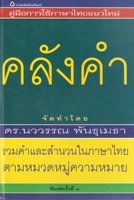
คลังคำ [“Treasury of Words”] by ดร.นววรรณ พันธุเมธา [Nawawan Phanthumetha], Amarin Press, first published 2554 (2001), ISBN 974-272-271-4, hardcover, 600 baht.
[The word คลัง can mean storehouse or treasury; in this context, I like the treasury metaphor better]
This Thai language volume is a combination of dictionary and thesaurus and was targeted at the author’s university students. Its objective is to highlight similarities and differences between words in a specific category. The book is divided into two parts: the first portion is comprised of word listings with definitions within specifically defined sections and subsections. For example subsection ข ๙๐ [B90] is entitled “การลงความเห็น” [expressing an opinion] and the words contained in this subsection are: ตัดสิน [to decide] พิพากษา [pass judgment] วินิจฉัย [to come to a conclusion] ดุลพินิจ [to use discretion].
Each of these words is followed by a short definition or explanation. These definitions are less extensive than those in the RID; the book does not provide a pronunciation guide; and it does not always contain sample usages. คลังคำ was not created to replace a dictionary, but to provide the curious reader and serious author a means of comparing and distinguishing the meanings and usages of the Thai lexicon.
The second section of the book is an alphabetical listing of words followed by a reference back to the first portion.
The categories in the first section seem thoughtful. Here is an example of a section and some of its subsections:
Section 21 – 54, ส่วนหัวและหน้า [parts of the head and face]: subsection 21: หัว [the head]; subsection 22: ลักษณะหัวที่สัมพันธ์กับปริมาณเส้นผม [characteristics of the head which relate to the amount of hair]; subsection 23: รูปหัว [shape of the head]; subsection 24: หน้า [the face]; subsection 25: ลักษณะหน้า [characteristics of the face]; subsection 26: รูปหน้า [shape of the face]; subsection 27: ผิวหน้า [surface of the face]; subsection 28: ความแดงของหน้า [redness of the face]; subsection 19: หน้าแสดงนิสัย [one’s face displaying one’s temper or nature]; subsection 20: หน้าแสดงความรู้สึก [one’s face betraying one’s feelings] ...
Ajarn Nawawan’s book is not for the casual foreign learner of Thai, but it is for those learners with a strong curiosity about Thai words and their differences and who seek a broader vocabulary. One is often asked, “How come Thais use the word สวย [beautiful] so much; aren’t there any other words to express the same idea?” Well, this book gives you the answer with some 15 synonyms and 6 antonyms.

บรรทัดฐานภาษาไทย เล่ม ๑, หนังสืออุเทศภาษาไทย ชุด บรรทัดฐาน [Standards of the Thai Language, Volume 1 of a Series Explaining the Thai Language] issued by สถาบันภาษาไทย, กรมวิชาการ, กระทรวงศึกษาธิการ [Thai Language Institute, Department of Curriculum and Instruction Development, Ministry of Education] in 2545 (2002). The book sells for 59 baht.
This series, of which volume 1 is under review here, was published by the Thai Language Institute with a stated purpose of providing Thai teachers updated, standard material for developing curricula for teaching Thai language to their students. There is no indication that the Ministry of Education intends these volumes to be an “official text”, that is, a prescriptive set of rules to govern how Thai should be written or spoken. Rather, the Ministry found: “ครูผู้สอนภาษาไทยจำนวนมากขาดตำราที่ทันสมัยและเข้าใจง่าย ที่จะให้ความรู้เกี่ยวกับลักษณะและหลักภาษาไทย และมีเนื้อหาเกี่ยวกับการใช้ภาษาไทยในปัจจุบัน” [Many Thai language teachers lack modern and easily understandable text books which provide knowledge regarding the nature of and principles behind the Thai language and which contain material regarding the use of the Thai language in today’s environment.”]
The result is a textbook which provides a broad range of material for students. Volume 1 is composed of six major areas of study:
Unfortunately, the text lacks an index, but it does contain a five-page bibliography of both Thai and English reference works on the language in general and Thai in particular.
The book takes a practical approach to topics; the authors seem to have geared their presentation of the material to a general audience, rather than to a specialized academic audience. Take, for example, the question “Why are there so many letters in the Thai alphabet that produce an “s” sound?” Here is a broad answer to this question from page 77. After explaining that the current Thai language draws from multiple source languages, the authors state,
Later, in the chapter on spelling on page 124, the authors discuss under what circumstances and origins the various consonants producing the “s” sound are used: “ส” as an initial in most native Thai words; “ศ” as an initial in some native Thai words; “ส” is also used in words which come from Pali because Pali does not utilize “ศ” or “ษ”. The text further explains how all three initial consonants are used in Sanskrit-origin words and how “ส” is used as an initial and final in words originating in other foreign languages. A later paragraph shows the usage of “ซ” and “ทร”. More detailed knowledge on origins and etymology requires reference to a book on Thai linguistics.
This small text is a worthy successor to the canonical หลักภาษาไทย [Fundamentals of the Thai Language] by กำชัย ทองหล่อ [Kumchai Thonglaw] published in 1962. For the foreign student of Thai, this book of “Standards of the Thai Language” can serve as a fine reference to help answer questions regarding the structure and usage of Thai words as well to be used as a supplement to a course on Thai reading and comprehension.
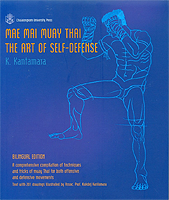
แม่ไม้มวยไทย ศิลปะป้องกันตัว, Mae Mai Muay Thai The Art Of Self-Defense by คึกเดช กันตามระ [Khukdet Kantamara], ISBN : 9789740327127, 370.00 baht.
For those students of the Thai language who are interested in Thai boxing (or conversely those boxers interested in Thai) this is the book for you. The text is bi-lingual – each open set of two pages displays a line-drawing illustration, a set of instructions in English and a set in Thai. The English translation is fairly literal, but the dyed-in-the-wool boxer will not mind at all.
From the description of this volume from chulabook.com:
I can’t speak for the quality or accuracy of the moves, but this book should go a long way in improving communications between Thai instructors and their foreign students.
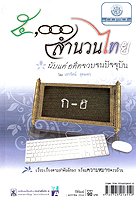
๕,๐๐๐ สำนวนไทย นับแต่อดีตจวบจนปัจจุบัน [5,000 Idioms, Metaphors, and Proverbs, From Past to Present], compiled by เอกรัตน์ อุดมพร [Aekarat Udomporn], ISBN 978-974521855-0, January, 2554 (2011), 90.00 baht.
Thai bookstores carry any number of books labeled “สำนวนไทย”. The term สำนวน is translated by some dictionaries as “aphorism”, and the author of the book containing 5,000 of them includes in the ambit of “สำนวน” the notions of “คำอุปมาอุปไมย” [metaphors], “คำพังเพย” [idioms], and “สุภาษิต” [proverbs]. Suffice it to say that the book contains a hodgepodge of sayings and metaphors which might not be found in most dictionaries.
The format is an alphabetical listing of these items, followed by an explanation in Thai of what the particular item means; the book unfortunately does not contain much in the way of usages of the phrases.
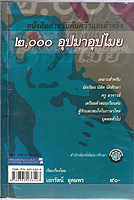
๒,๐๐๐ อุปมาอุปไมย [2,000 Metaphors] compiled by เอกรัตน์ อุดมพร [Aekarat Udomporn], ISBN 974-523-612-8, 2547 (2004), 90 baht) is prior work by the same author. This latter volume provides not only more explanation for each item, but often tells us who the author of the phrase was.
These two books and others like them are great conversation pieces when meeting with Thai friends or to break the ice with strangers. Thais will almost always smile when they read through the book and will have a great time trying to explain them to you. Some Thai metaphors and says are highly culture-specific, while others have similar English counterparts. For example, “แมวเฝ้าปลาย่าง” [Asking the cat to guard the grilled fish] is easily translatable into “Letting the fox guard the henhouse.” “หัวล้านได้หวี” is explained as “การได้รับสิ่งที่ไม่มีประโยชน์สำหรับตน” [someone getting something which has no use to him] would seem to be “Bringing coals to Newcastle”. One website has it as “to cast pearl before swine”; I think this does a disservice to the follically challenged.
A book of a similar genre is คำคล้องจอง, เสน่ห์ของภาษาไทย [Harmonious Phrases (Rhyming Words), the Charm of the Thai Language], by ชัยรัตน์ วงศ์เกียรติ์ขจร [Chairat Wongkietkhajohn], ISBN 974-00-8727-2, 2546 (2003), 210.00 baht. This book contains many “elaborate expressions” which employ Thai rhyming schemes.
Bookstores carry volumes of phrases, aphorisms, metaphors, and proverbs for all levels of study, from elementary level on. Some even try to match up their equivalent English phrase or proverb. The best of them carry explanations of the cultural sources of the phrases. One of these books is บ่อเกิดสำนวนไทย [The Origin of Thai Idioms] by ดนัย เมธิตานนท์ [Danai Maethitanon], ISBN 974-8229-71-8, 2548 (2005), 200 baht.
These books and other like them can be very valuable to the learner, not necessarily for normal conversations, but to gain a greater insight into the Thai cultural mentality and to recognize their meanings in everyday readings. Try these phrases in word games with a bunch of Thai friends.
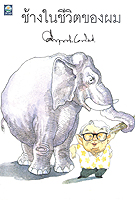
ช้างในชีวิตของผม [The Elephants in My Life] by ม.ร.ว.คึกฤทธิ์ ปราโมช [M.R. Kukrit Pramoj], ISBN 974-690-514-7, first published as essays during the 1970’s, reprinted in 2549 (2006), 100 baht.
Maj. Gen. Mom Rajawongse (M.R.) Kukrit Pramoj ม.ร.ว.คึกฤทธิ์ ปราโมช (April 20, 1911 - October 9, 1995) was a Thai politician and scholar. He was Speaker of the House of Representatives of Thailand 1973-1974 and was the thirteenth Prime Minister of Thailand, serving in office from 1975-1976. He was also an author of a number of books and short stories.
One such book is a recent compilation of essays originally penned by Kukrit in the 1970’s and published originally in his newspaper, Siam Rath. The book is entitled The Elephants in My Life. Some of the articles seem to have been inspired in part by Thailand sending elephants to the Expo in Osaka Japan [เอกซ์โปเมืองโอซากา] in 1970 and the positive Japanese reaction to them. The Thai elephants in Japan are mentioned throughout the book.
The language is fairly easy read for the intermediate foreign student of Thai. Here is a sample from the story, The Elephant and its Mahout:
Kukrit writes in a simple, humorous style while always maintaining a high regard for his subject matter and the cast of characters who populate his stories. Other books which reflect this gentle humor in the short story or essay format include “ตลาดนัด” [The Flea Market], and “เพื่อนนอน” [Bedtime Stories], both listed below. Kukrit has written a number of other novels and books of essays which you can find most easily at the Chula Book Center located behind Siam Square in Bangkok.
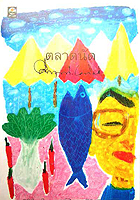
ตลาดนัด [The Flea Market] ISBN : 974-690-482-5, 120 baht, is a collection of essays about the buying and selling habits of ordinary Thai people. Not to be missed is the wonderful essay on ของฝาก [gifts brought home from one’s travels.] and how this custom can often cause more burdens than joy.
เพื่อนนอน [Bedtime Stories] ISBN 974-690-081-1, 175 baht, is a series of short stories and retelling of old tales but with unusual twists and turns and surprise endings. The first story is Kukrit’s wonderful version of The Frog Prince; this is a must-read. These stories and their humor are highly reminiscent of O. Henry’s stories or Garrison Keeler’s monologues.
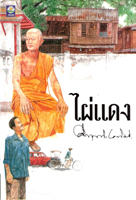
ไผ่แดง [Red Bamboo], ISBN 974-690-099-4, 2497 (1954) is a novel composed of a set of vignettes describing the relationship between a firebrand communist leader and his opposing number, a Buddhist abbot in a small temple in a tiny village in Central Thailand. The stories are set during the communist insurgency during the post-WWII era. The stories are populated by specific moral personalities, much like Dickens’s characters, and they are so engaging and the stories so interesting that it is difficult for the reader to be satisfied reading only one story.
For the foreign student of Thai Kukrit’s writings are a treasure trove of learning opportunities coupled with really good writing. The language is fairly accessible to students of the language, even decades after they were written. Furthermore, because Kukrit is a well-known and respected writer, virtually all the vocabulary the reader encounters will be found in most Thai-English dictionaries.
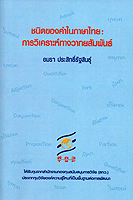 ชนิดของคำในภาษาไทย: การวิเคราะห์ทางวากยสัมพันธ์ [Parts of Speech in Thai:A Syntactic Analysis] by อาจารย์ อมรา ประสิทธิ์รัฐสินธุ์ [Amara Prasithrathsint], ISBN 978-616-551-259-6,
First/only printing: 2010 (300 copies), December 2010, 250 baht.
ชนิดของคำในภาษาไทย: การวิเคราะห์ทางวากยสัมพันธ์ [Parts of Speech in Thai:A Syntactic Analysis] by อาจารย์ อมรา ประสิทธิ์รัฐสินธุ์ [Amara Prasithrathsint], ISBN 978-616-551-259-6,
First/only printing: 2010 (300 copies), December 2010, 250 baht.
Dr. Amara is a professor of Thai language at Chulalongkorn University. The focus of this book is, as its title indicates, an approach to Thai parts of speech based on historical analysis and current usage. Chapter two is a review of the historical literature on the subject of parts of speech and chapter 3 is an similar analysis for the Thai language. Her conclusion is that there are eight major parts of speech in Thai: คำกริยา (verb), คำนาม (noun), คำคุณศัพท์ (adjective), คำบุพบท (preposition), คำวิเศษณ์ (adverb), คำสันธาน (conjunction), คำปริมาณ (quantifier), and คำอนุภาค (particle). Of course, many of these major categories contain a number of subcategories.
Abridged/loose translation of the contents:
Some of her characterizations and categorizations are novel and surprising. In section 3.2.4, for example, she discusses the concept of คำบุพบท, "prepositions". In addition to the examples she provides which shows prepositions followed by a noun, she also provides examples of prepositions followed by a verb: "คำบุพบท คือคำที่ปรากฏหน้าคำนาม หรือ คำกริยา..." Here are the examples she provides of prepositions followed by a verb:
Based on my mother tongue prejudice, I would consider a word to be a preposition only if it is followed by a noun; her perspective is otherwise.
Another major facet of the book is her tables showing that a given Thai phoneme has multiple meanings and grammatical functions. She lists words which can be verbs or prepositions; nouns or prepositions; nouns or adjectives; verbs or adverbs; verbs and quantifiers; and more.
One of the major contributions in the text is a full bibliography of both Thai and English books which discuss this subject.
A full three-quarters of the book is taken up with an analysis of Thai verb forms which have multiple uses and meanings, including grammatical uses. Each word is categorized according to a clear set of definitions and forumulae and a short sample sentence of each usage is given.
For those Thai language learners who have an interest in analyzing Parts of Speech, this book is invaluable.
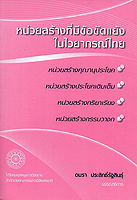 หน่วยสร้างที่มีข้อขัดแย้งในไวยากรณ์ไทย [Controversial Constructions in Thai
Grammar]
หน่วยสร้างที่มีข้อขัดแย้งในไวยากรณ์ไทย [Controversial Constructions in Thai
Grammar]A discussion of grammatical constructs in Thai which are still areas of on-going academic research:
 ภาษาในสังคมไทย: ความหลากหลาย การเปลี่ยนแปลง การพัฒนา [Language in Thai Society:
Diversity, Change and Development]
ภาษาในสังคมไทย: ความหลากหลาย การเปลี่ยนแปลง การพัฒนา [Language in Thai Society:
Diversity, Change and Development]Covers summaries of indigenous languages in Thailand, overview of language families in Thai Society (Tai-Kadai, Chinese-Tibet, Austroasiatic, Austronesian), language levels in Thai society (eg. street Thai, formal, royal...), sociolinguistic factors (age, sex, status etc), linguistic changes in society, changes in standard Thai (historical & modern), language preservation, the Royal Institute (history, organisational structure & activities), construction of new Thai words/terminology.
Of particular interest to students of the Thai language is Chapter 6, pages 60-71, "ภาษาย่อยของภาษาไทย" [Dialects of the Thai Language] which concentrates on the various languages which are based on divisions in society. Her divisions include
 วิวัฒนาการภาษาไทยและอักษรไทย [Evolution of the Thai Language and Alphabet]
วิวัฒนาการภาษาไทยและอักษรไทย [Evolution of the Thai Language and Alphabet]According to the introduction, this book is a standard text used at many universities for bachelor degree students reading Thai Language and Literature. It covers the origins of Thai language (including the influence of languages in the (modern day) areas of Vietnam, Cambodia, China, Burma/Myanmar, Laos and India), word formation/change, types of compound words, idioms etc.
The discussion of alphabet evolution outlines pre-Ramkhamhaeng writing systems which were in wide use across the region. Section 6.5.5.1 (ใครเป็นผู้ประดิษฐ์ลายสือไทย Who was the inventor of Thai Writing?) briefly deals with that oft-asked question with quotations from various sources. Subsequent sections concentrate on how the Ramkhamhaeng system was devised from existing systems and then outlines the significant changes that were made during various subsequent eras up to and including those of Field Marshal Plaek Phibunsongkhram during World War 2.
Although this is a good read for those interested in the subject, there are a few parts which lack historical context, concentrating on what happened but no analysis of "why?". Nevertheless, this is minor criticism for a book that provides a good introduction to the subject.
Contents: (translation of section titles only, not subsections)
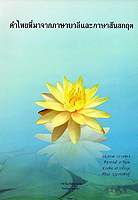 คำไทยที่มาจากภาษาบาลีและสันสกฤต [Thai Words That Come from Pali and Sanskrit] by
The Royal Institute, ISBN 9786167073187
คำไทยที่มาจากภาษาบาลีและสันสกฤต [Thai Words That Come from Pali and Sanskrit] by
The Royal Institute, ISBN 9786167073187A dictionary-style book listing Thai words from the Pali & Sanskrit languages. Each entry is listed as:
is split into constituent syllables with the definitions for the whole word, original Pali and/or Sanskrit spellings of the original words/syllables with definitions.
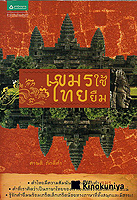
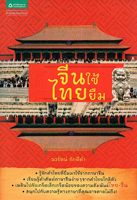 เขมรใช้ ไทยยืม [Khmers/Cambodians Use, Thais Borrow]
เขมรใช้ ไทยยืม [Khmers/Cambodians Use, Thais Borrow]These two dictionary-style books explain the history of loan words that have entered the Thai language from the Khmer/Chinese languages. Each entry gives the native spelling in Khmer/Chinese script along with archiac Thai spellings (where relevant). They are good books to pick up occasionally for a quick read rather than reading cover-to-cover.
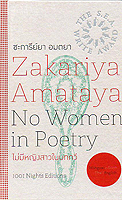 ไม่มีหญิงสาวในบทกวี [No Women in Poetry]
ไม่มีหญิงสาวในบทกวี [No Women in Poetry]S.E.A. Write Award Winner 2553. A collection of (mostly) short poems in either bilingual or monolingual editions. A talented writer and for Thai learners the bilingual edition is great!
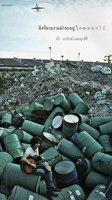 สิ่งที่สวยงามมักจะอยู่ไกลออกไป [Beautiful Things Are Usually Far Away]
สิ่งที่สวยงามมักจะอยู่ไกลออกไป [Beautiful Things Are Usually Far Away]The author states on the back cover that "this book is not poetry but I use it as a place to release my thoughts." Filled with a collection of short writings that look very much like poetry, there are some fun, surreal, and serious writings from this young author/actor/model.
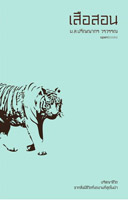
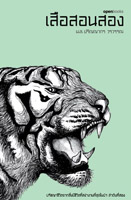
เสือสอน [Taught by a Tiger], ISBN 9786167347196, September 2553 (2010), 165 baht; เสือสอนสอง [Taught by a Tiger, Two], ISBN 9786167347493, September 2554 (2011), 150 baht, both written by ม.ล.ปริญญากร วรวรรณ [M.L. Prinyakorn Worawan] and published by Open Books
ม.ล.ปริญญากร วรวรรณ [M.L. Prinyakorn Worawan ] is a wildlife photographer and writer who contributes a regular column to Matichon. These two books are collections of some of his articles and deal with life in a conservation centre, tracking, tagging and monitoring some of the few remaining Thai tigers, along with the author’s reflections on life in the forest. Each piece is short (only 5 – 8 pages) and once you get over a little technical vocabulary, they’re very easy to read so make great bedtime reading. One surprising discovery I made reading these two books are the unusual names of some Thai animals: ละมั่ง, หมาใน and อีเห็น all had me scratching my head for a while.A weakness of both books is that the individual articles don’t seem to have been re-edited for the collection, which makes the author’s reuse of certain vocabulary and structural items a little obvious, but for a learner, this is actually an advantage as the low-level repetition aids retention.
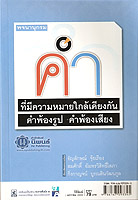 พจนานุกรมคำที่มีความหมายใกล้เคียงกัน คำพ้องรูป คำพ้องเสียง [Dictionary of Words with Similar Meanings; Homographs; and Homophones]
by ธัญลักษณ์ จุ้ยเรือง [Thanyalak Juirueng],
สมศักดิ์ อัมพรวิสิทธิ์โสภา [Somsak Ampornwisitsopa], กิ่งกาญจน์ บูรณสินวัฒนกูล [Kingkayot Booranasitwatanakun], ISBN 978-616709334-5, January 2555 (2012), 248 pages, 79 baht.
พจนานุกรมคำที่มีความหมายใกล้เคียงกัน คำพ้องรูป คำพ้องเสียง [Dictionary of Words with Similar Meanings; Homographs; and Homophones]
by ธัญลักษณ์ จุ้ยเรือง [Thanyalak Juirueng],
สมศักดิ์ อัมพรวิสิทธิ์โสภา [Somsak Ampornwisitsopa], กิ่งกาญจน์ บูรณสินวัฒนกูล [Kingkayot Booranasitwatanakun], ISBN 978-616709334-5, January 2555 (2012), 248 pages, 79 baht.
This majority of this book comprises a thesaurus of sorts, comparing the meanings of Thai words with similar meanings but different usages. Each set of words includes a definition of each word and an example of its usage. The book contains no English; all definitions are in Thai, as are the examples. Here are some of the words which are distinguised from one another:
The different usages are interesting. Here are two sample sentences contrasting ขน and บรรทุก:
“คุณแม่ซื้อของมาหลายอย่าง ลูก ๆ จึงช่วยขนเข้าบ้าน”So, ขน is “to carry by hand” whereas บรรทุก is “to transport.”
The second section contains words which are pronounced identically but are spelled differently. This section includes such homonym sets as {กาน, การ, กาล, กานณ์, กาฬ, กานต์, การณ์, กาญจน์} and {พัน, พันธ์, พันธุ์, พรรณ,ภัณฑ์}. Each is provided a definition. The third section contains words which are spelled alike, but depending on the meaning, are pronounced differently. Thus กระ can be pronounced “กรี” and “กะรี”. เพลา can be either “เพ-ลา” or “เพลา”. The ubiquitous “practice tests” follows. The book does contain an index, but for the thesaurus words, only the full comparison set is provided with its page number. Thus the discussion for “กลืน กิน และ หม่ำ” is shown to be on page 19, but the index does not contain a separate entry for กิน or หม่ำ.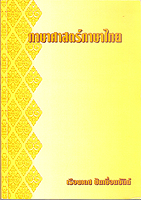
ภาษาศาตร์ภาษาไทย [Thai Linguistics] by เรืองเดช ปันเขื่อนขัติย์ [Ruengdet Pankhuenkhat, M.A., PhD (Linguistics)], published by มหาวิทยาลัยมหาจุฬาลงกรณราชวิทยาล้ย [Chulalongkorn University], ISBN 978-974-364-827-4, 2541(1998), last printed 2552(2009), 300 baht.
Thai Linguistics is a textbook developed from materials used at Chulalongkorn University to teach Thai Structure as part of the Arts curriculum. Although the primary language of the book is Thai, most of the terminology is translated into English for the benefit of the students who will be pursuing a degree in Linguistics and who will need to know this terminology for their future studies. Although the text appears to be translating from Thai to English, in truth the Thai terms are words based on English originals. Phonology is “ระบบสร้างเสียง” [system for creating sounds]; morphology is “ระบบคำ” [word systems]; and syntax is “ระบบประโยค” [sentence systems].
Other terms which may be of interest to foreign students learning Thai include: diphthong, “สระประสม”; phoneme, “หน่วยเสียง”; morpheme, “หน่วยเสียง”; and, consonant cluster, “พยัญชนะเสียงควบกล้ำ”. In discussing tone patterns with native Thai speakers a foreign student might find that his description of a tone as “mid tone”, “low tone”, “falling tone”, “high tone”, and “rising tone” does not resonate with his Thai respondent. However, if he uses the terms “เสียงวรรณยุกต์สามัญ”, “เสียงเอก”, “เสียงโท”, “เสียงตรี”, and “เสียงจัตวา” respectively, the Thai person is more likely to understand.
Let’s look at some of the chapter headings to get a feel for the range of subjects the book contains:
The grammatical analysis in the chapter on “word classes” is more extensive than that in Ajarn Nawawan Panthumetha’s Thai Grammar, although Ajarn Ruengdet makes a number of references to her work in this section and adopts her “functional” analytical method. (See page 191 of Thai Linguistics.) The functional approach to classification emphasizes the utility of the word in the sentence, rather than its meaning or position. Thus, the author shows, a word with a single meaning in Thai can function in multiple word classes:
The book contains an extended bibliography of both Thai and English books, as well as an index of Thai terms. There is no glossary of common linguistic terms in either Thai or English. Thai Linguistics is an excellent book for foreign learners who have a strong interest in a modern, academic knowledge of the Thai language from the perspective of a Thai professor writing in his own language.
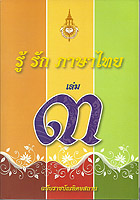
รู้ รัก ภาษาไทย [To Know and To Love the Thai Language], เล่ม ๓ [Volume 3], ฉบับราชบัณฑิตยสถาน [The Royal Institute], ISBN 978-616-7073-15-6, 2553 (2010), 100 baht.
This is the third in a series of books published by the Royal Institute which contains short essays in Thai on various language topics; each essay is 10-20 lines long. This volume contains both a table of contents and an index as well as a limited set of pictures. Unfortunately, the index is not comprehensive including material from the two previous volumes. The following are some of the topics covered:This is a great reference series and it can be used by Thai teachers to provide explanations to “why” questions to inquisitive foreign students.
The Royal Institute, firmly in the 21st century, as included these articles on its website. For example the discussion of กระทู้ can also be found at กระทู้.You can access the search function on the Royal Institute website at word search function by entering your search word in the box in the right-hand column and pressing the “ค้นหา” button.
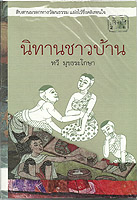
นิทานชาวบ้าน[Tales from the Hinterlands] by ทวี มุขธระโกษา [Thawee Muktharakhosaa], ISBN 974-90651-4-X, December 2553 (2010), 140 baht.
This is a book of traditional short morality tales. The stories were originally compiled in 1965 by Shigeo Masui of the Research Institute of Comparative Education and Culture of Kyushu University. Here are some of the story titles:
The stories begin in the traditional manner, “ครั้งหนึ่งนานมาแล้ว...” [Once apon a time...] and some end in a similar time-honored manner, “...และอยู่กินด้วยความสุขตลอดมา” [...and they lived happily thereafter] or “...โดยไม่เหลียวหลังกลับมาอีกเลย” [...without turning around and looking back.]
Overall the language is fairly approachable for foreign learners: the vocabulary is composed mostly of common words and the sentence structure is fairly simple.
These are stories best read with a teacher, although a persistent and eager advanced beginner can read and enjoy these stories.
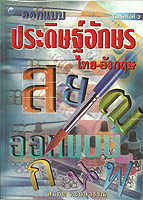
ออกแบบประดิษฐ์อักษรไทย-อังกฤษ [Lettering in Thai and English] by สมคิด หงษ์สุวรรณ [Somkhit Hongsuwan], first published October, 2544(2001), ISBN 974-7463-69-5, 260 baht.
The book “Lettering” is a style manual for various typefaces and fonts. In addition to introductory material regarding how to write letters (วิธีออกแบบตัวอักษร), the book contains hundreds of pages of Thai type styles, from the highly formal to the modern and casual,from the highly stylistic วัยหวาน on pages 114-115 to the highly simplified เอราวัณ on pages 168-169 which appears as ponderous and elephantine as its name implies. Especially interesting is the mimic Old-English font เถาวัลย์ which is as difficult to parse out as its Western counterpart.